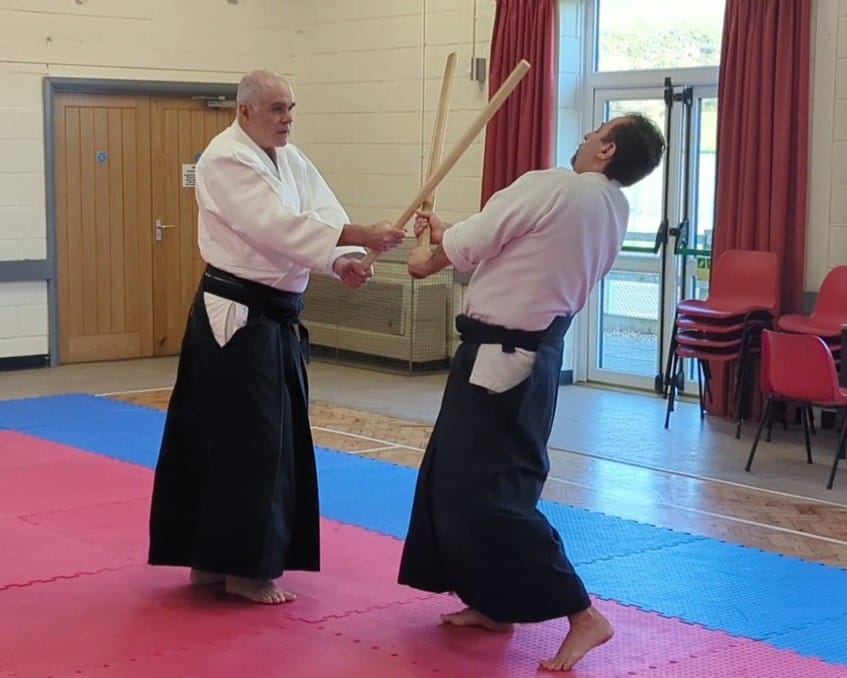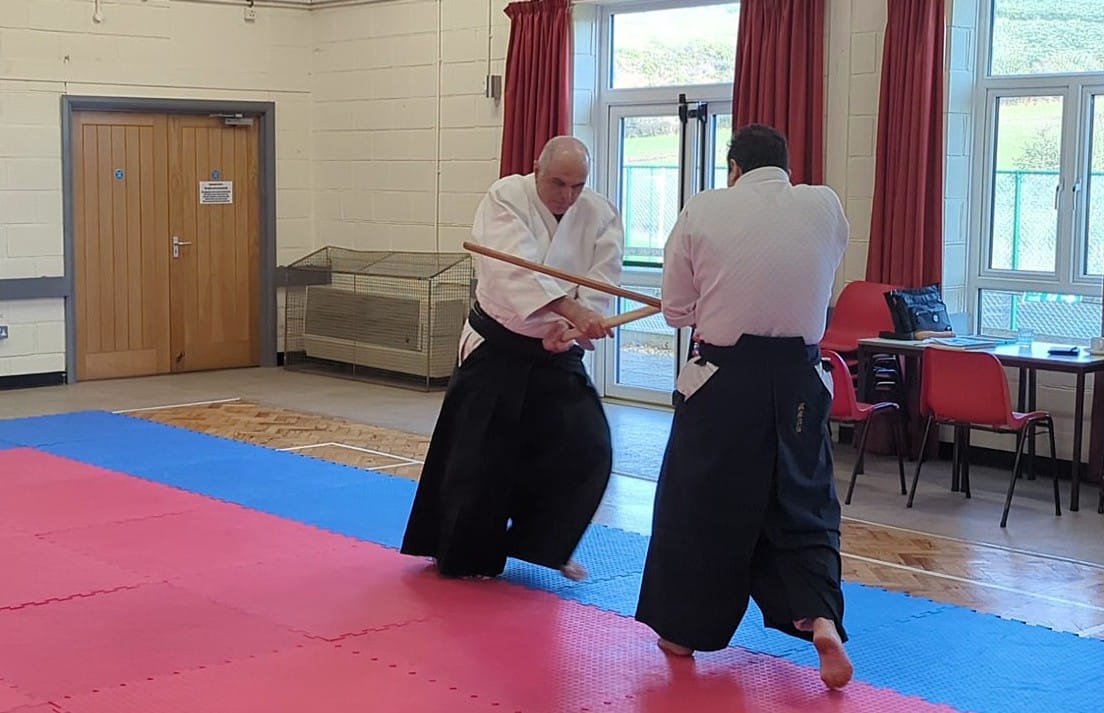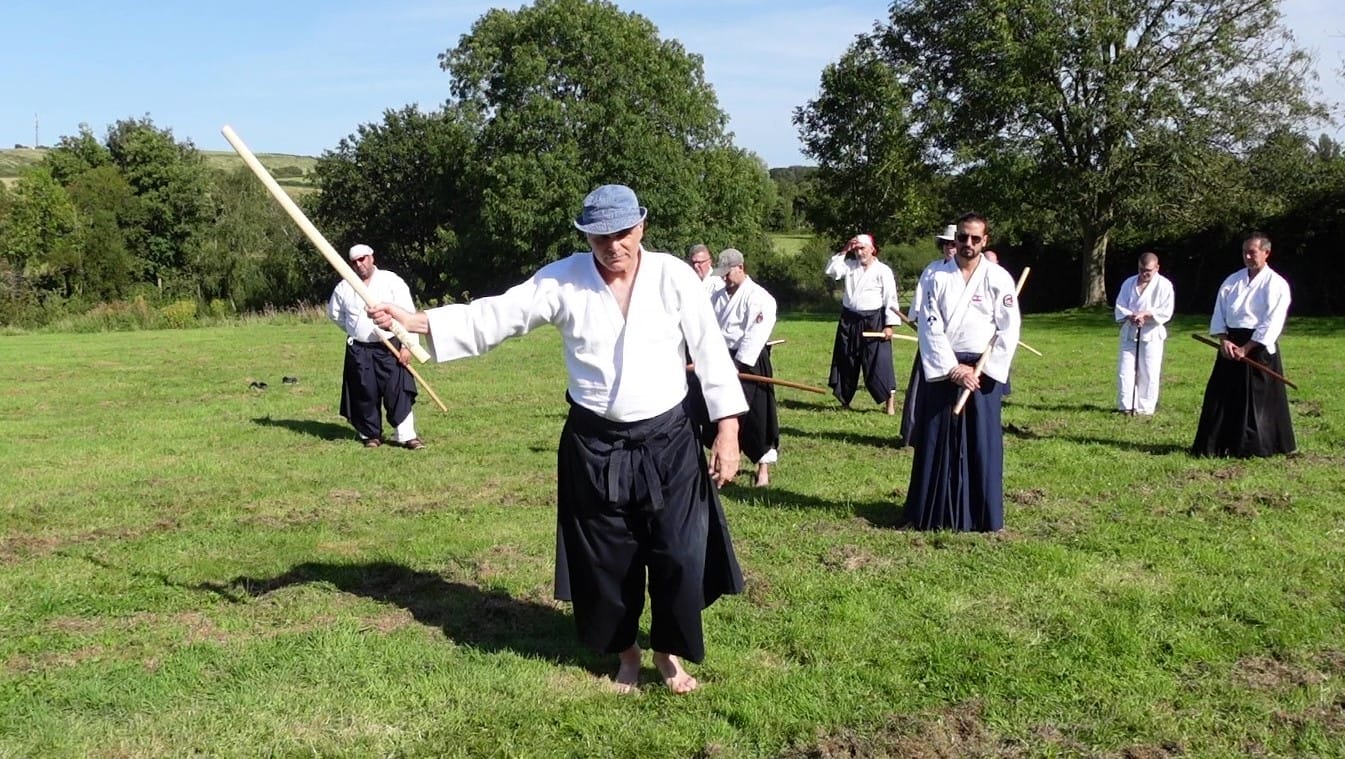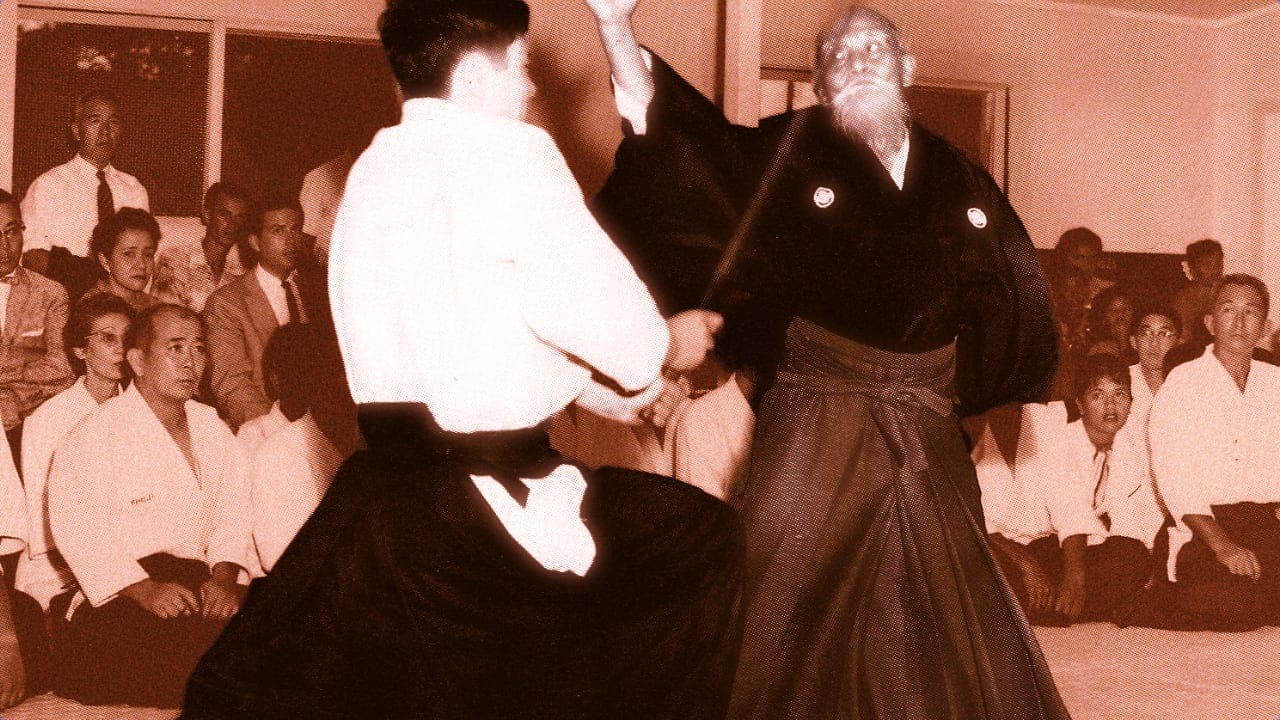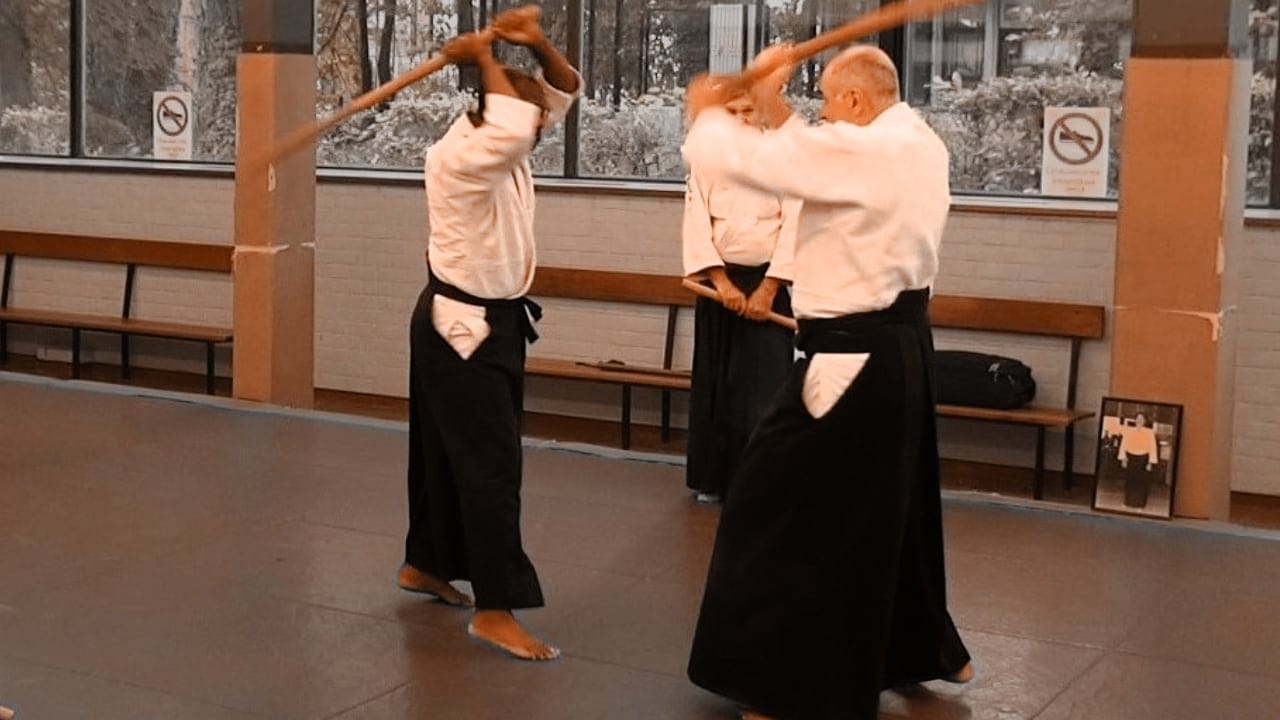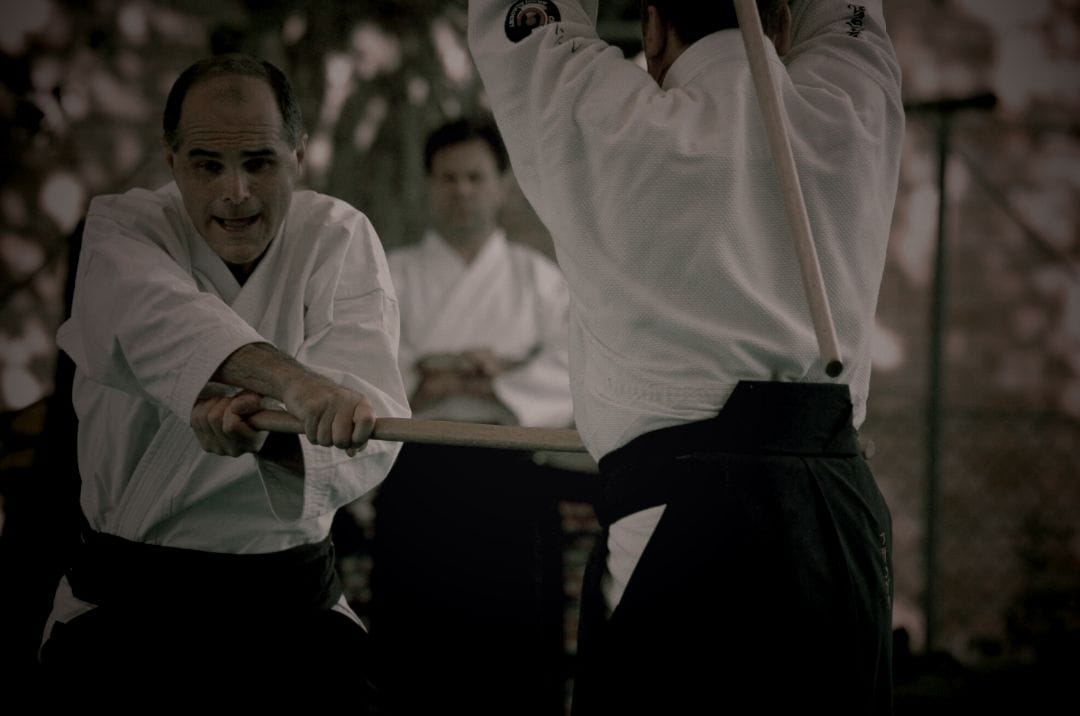There are two fundamental Aiki ken exercises that must be practised again and again if you want to achieve good ken mastery. Go no awase is one of them. This is the exercise shown in the video :
This exercise is the application of two suburis: shomen uchi and yokomen uchi.
Uchi tachi attacks with yokomen uchi, moving forward (at a slight angle).
Uke tachi receives the attack with shomen uchi, moving back (at a slight angle).
In actual fact, in Aikido, uke tachi must spin around like a top, forwards or sideways - these are the six directions - and therefore never moves backwards.
So why is the go no awase exercise conceived in this way?
Because it is necessary to learn how to cut properly.
Of course, you can learn to cut by practising tanren uchi, which is excellent, you can really hit and you absolutely must, but then you practise on an inert target (a bundle of wood, a tyre...).
Go no awase is the method for practising a real strike on a moving target. The uchi tachi sword is this moving target on which we practice : we cut on the sword (this is why the uchi tachi sword must have a certain ‘consistence’).
Practising on a moving target is a necessary step in learning awase, that is, harmonising with the energy of the opponent's attack. And it's easy to see why go no awase is called such.
If there were no go no awase as it is conceived, if we entered directly with irimi-tenkan on uchi tachi's attack - as the Aiki actually requires - then the moving target would be the real target, that is, uchi tachi's body, and it would not be possible to really strike, and therefore impossible to practise the cutting.
Go no awase is therefore not yet Takemusu Aiki, it is a preparatory exercise on the way to Takemusu Aiki. It is a necessary compromise in the learning process, and it is important not to think that the Aiki principle is respected in this exercise. The Aiki principle of irimi-tenkan is temporarily sidelined for the time it takes to acquire a good cutting technique; this is the study, the method, the Aiki-do.
It is essential to understand what you are doing and why you are doing it. It is essential to make a clear distinction between the learning method and the reality of Takemusu Aiki. Aiki-do is not Aiki: the whole of Aiki-do is nothing more than an ingenious learning method whose aim is to achieve Aiki.
This method is more or less effective depending on whether it is applied rigorously or not. Morihiro Saito applied the method rigorously, the Aikikai applies it laxly. But Aiki is a woman and cannot be conquered too carelessly.

